SK Hynix 16 Gbit M-Die is known to be the holy grail in terms of DDR5 overclocking, at least at time of writing. The prices for the fastest kits with clock rates in the XMP profile of over 6000 Mbps are still quite expensive. However, if you dare to work on the clock and timings of the RAM yourself anyway, cheaper kits with the same ICs are an interesting alternative. And that’s exactly what we’re looking at today, in the form of the Patriot Signature Line DDR5-4800 16 GB modules with part number PSD516G480081.
Specifications and PCB analysis
The Signature Line are cost-optimized DDR5 modules from Patriot without XMP profile. The capacities range from 8 to 32 GB per module, whereby the 16 GB modules are available in both single and dual-sided versions. The latter use x16 ICs, which have a significant performance disadvantage compared to the normal x8 ICs and should accordingly be avoided for desktop use if possible (PSD516G48002). Instead, we’ll look at the variant with 8 dedicated x8 ICs, with the full 8 bank groups that are common for DDR5.
The data sheet for the SKU from today’s test is also included at the end of the page, but don’t be confused by the product picture there – it shows a module with the mentioned x16 ICs. The specifications of the modules meet the JEDEC specifications for DDR5-4800 with timings 40-40-40-77 at 1.1 V. The modules also have a black PCB and no heat sink, so the memory chips are completely passively cooled by the ambient air.
The sticks are correspondingly light and compact, and are also only sold individually and not as a kit. Strictly speaking, we are testing two PSD516G480081 SKUs together today. Finally, a word of warning for all regarding the ICs installed. Because although both the picture on the spec sheet shows Hynix memory chips and our modules actually have them installed, the same product number is reportedly also available with the much less overclocking-friendly Micron RevA chips. So the only options are to ask the respective dealer for this information before buying, or to just try your luck with the loot box.
Since the teardown and heatsink test are not applicable today, we’ll take a look at the PCB and the installed components right away. A P8911Y0 from Renesas is used for the PMIC (Power Management Integrated Circuit), which brings a second disadvantage besides the IC uncertainty. This is because this PMIC is a “locked” model that does not allow more than 1.435 V for VDD and VDDQ according to JEDEC, which is a hindrance for overclocking. Fortunately, Asus, Gigabyte and meanwhile also MSI motherboards can partially bypass the lock, so that higher voltages are still possible depending on the used platform.
The pcb is an 8 layer design, manufactured by Brain Power and carries the markings 4M-1 E186014 and 94V-0 which indicate UL certifications for the north-american market. On the edge of the board you can also find the internal part number of the board B85URCA 0.90 HF and a layer indicator with the number “8”. If this sounds familiar, you will have paid attention in our other DDR5 tests. The Teamgroup VULCAN DDR5-5200 modules that we recently tested use the exact same PCB. This in turn means that Patriot and Teamgroup help themselves to the same shelf here at the OEM, but that doesn’t have to mean anything bad. Finally, the shielding net on the upper side of the board should be mentioned, which should additionally be beneficial for the operation of high clock rates.
PSD516G480081_Sku Sheet_111821














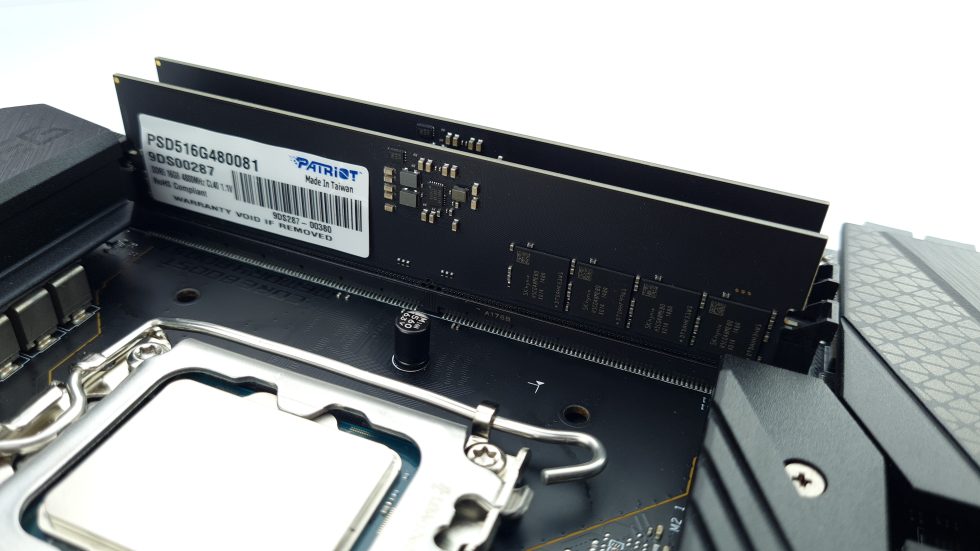
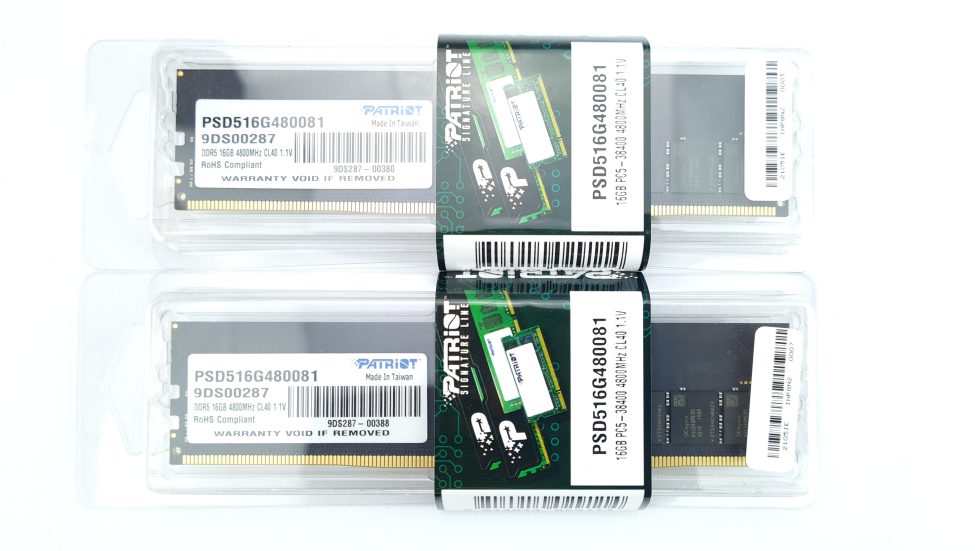
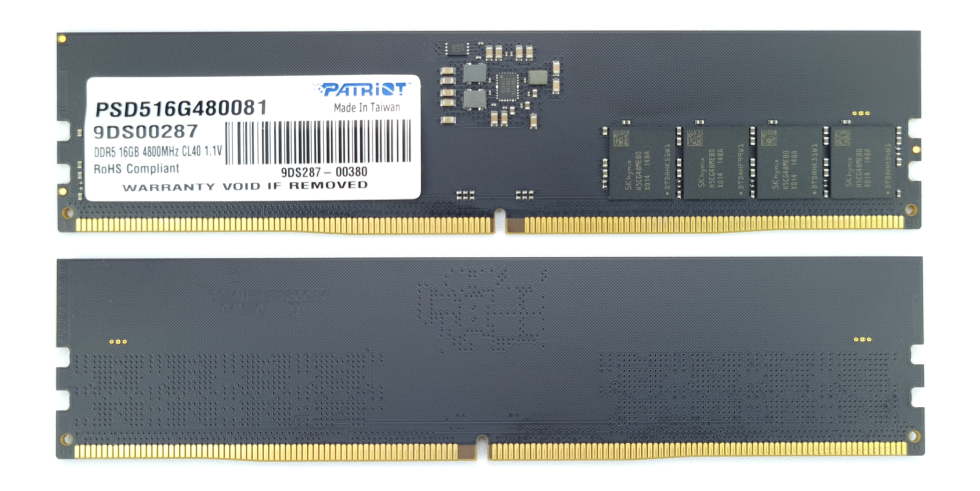
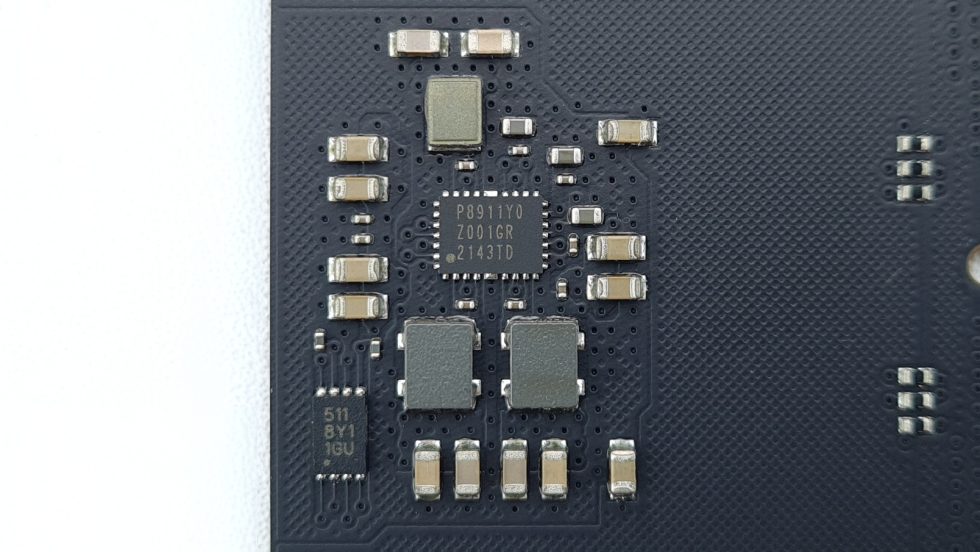
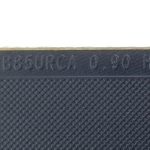
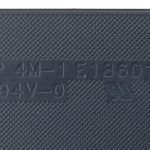
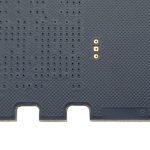




















5 Antworten
Kommentar
Lade neue Kommentare
Urgestein
Urgestein
Neuling
Veteran
Mitglied
Alle Kommentare lesen unter igor´sLAB Community →